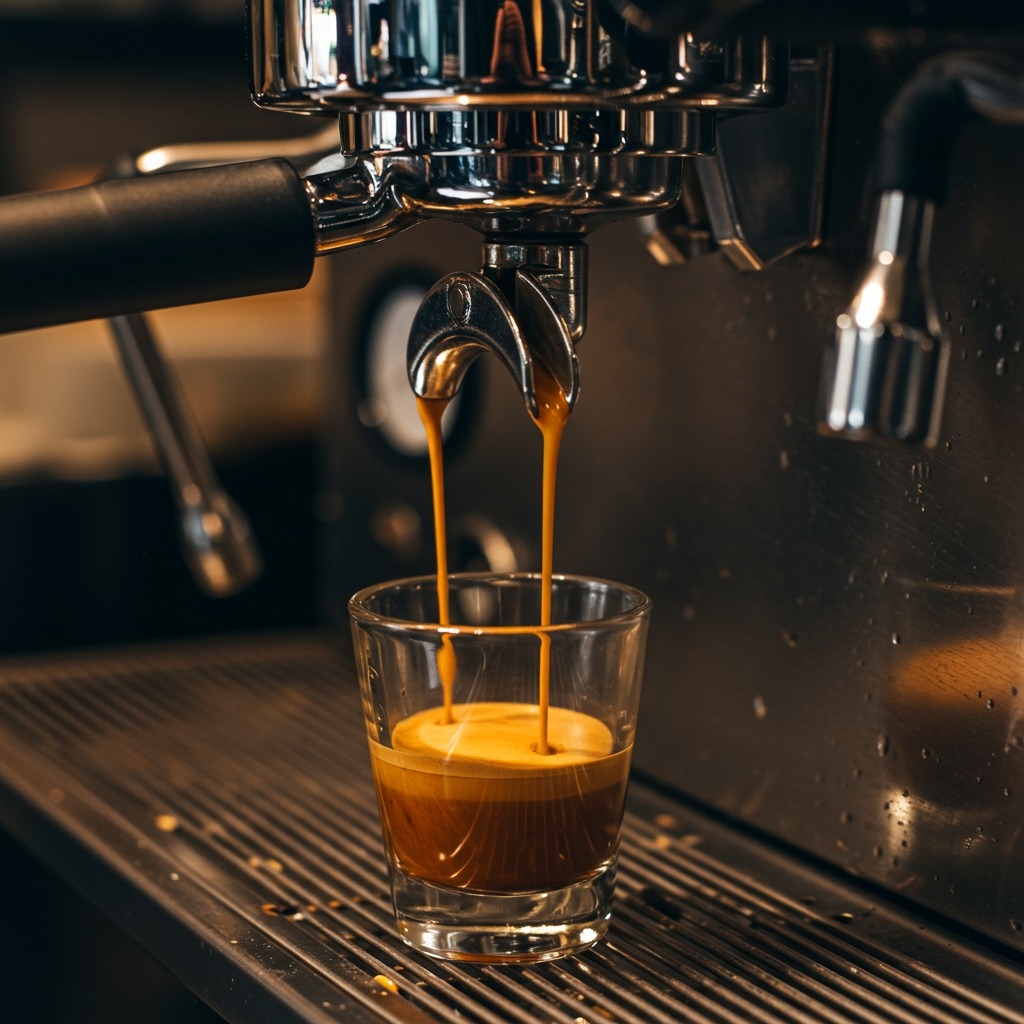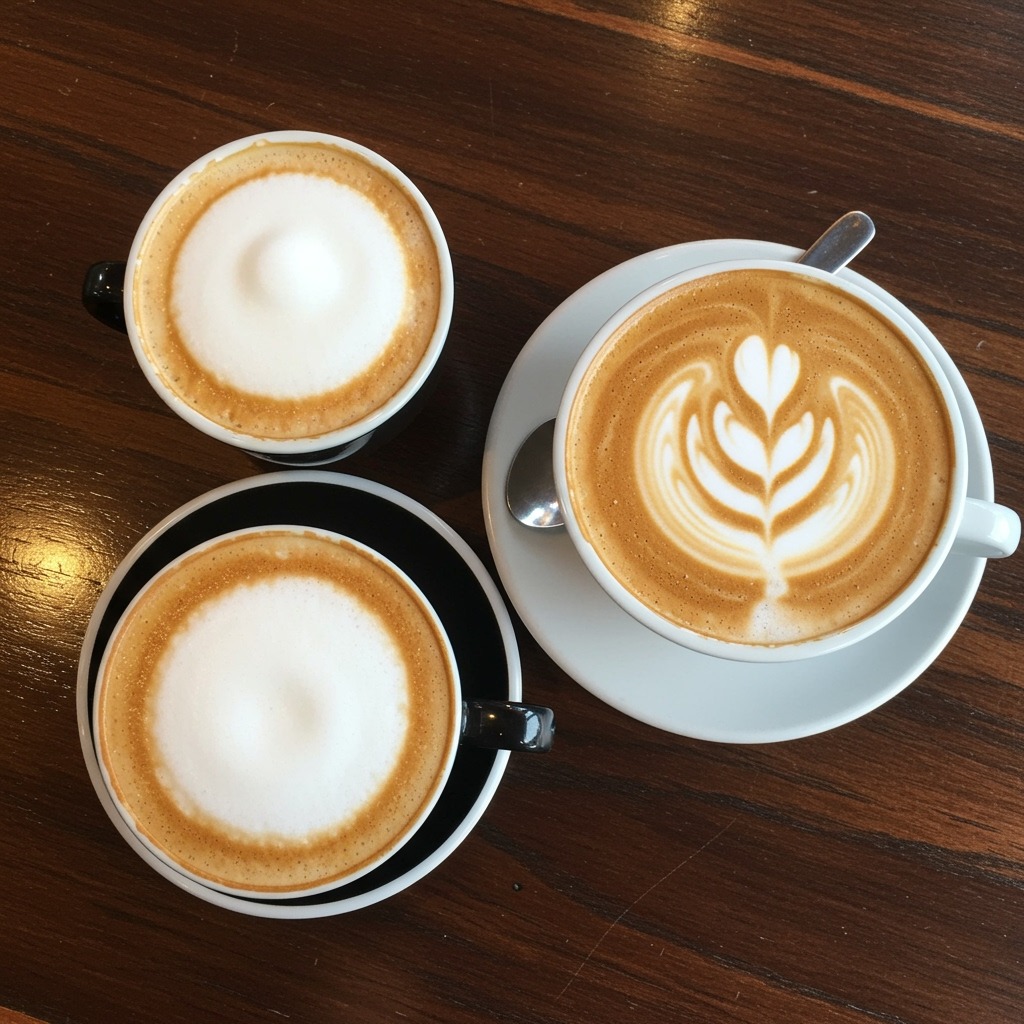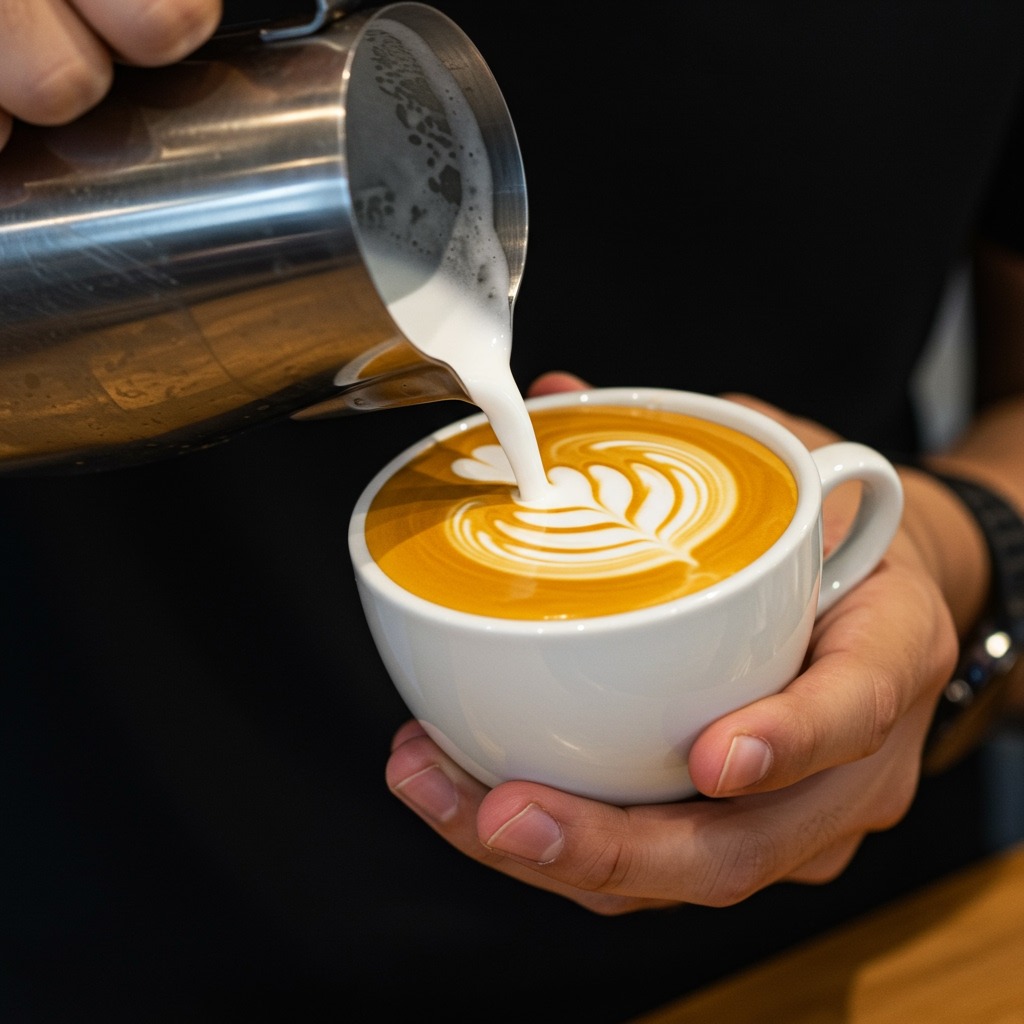Ever stood at the coffee counter, watching the barista work their magic, and pondered your choice between a latte and a cappuccino? You’re not alone. For many coffee lovers, the subtle (and sometimes not-so-subtle) differences between these two iconic espresso drinks remain a delightful mystery. Is it just the foam? The size? The amount of milk?
The confusion between latte vs cappuccino is common, but once you understand the core distinctions, choosing your perfect cup becomes effortless. It’s more than just a drink; it’s an experience. Are you a creamy comfort seeker, or a bold espresso enthusiast? This guide will demystify their origins, break down their ingredients and preparation, clarify their taste and texture, and empower you to pick the drink that perfectly matches your mood.
Let’s dive into the fascinating world of steamed milk and espresso, uncovering the secrets behind your favorite coffee shop staples.
The Espresso Base: The Heart of Both Drinks
Before we talk milk, we need to talk about the foundation: espresso. Both lattes and cappuccinos start with a shot (or two) of freshly pulled espresso. Without this concentrated coffee base, you simply don’t have these classic beverages.
What is Espresso?
Espresso is not a type of coffee bean or roast. It’s a brewing method. Hot, pressurized water is forced through finely-ground coffee beans, resulting in a small, concentrated shot of coffee with a rich crema on top. This crema – the reddish-brown foam on the surface – is crucial. It’s a sign of a well-extracted shot and contributes to the overall body and flavor of the drink. Learn more about the difference between espresso and coffee to appreciate its unique qualities.
Importance of a Quality Shot
A great latte or cappuccino relies on a great espresso shot. A poorly extracted shot (too bitter, too sour, or too weak) will throw off the balance of the entire drink, no matter how perfectly the milk is steamed. Baristas pay meticulous attention to grind size, dose, tamp pressure, and extraction time to get that perfect shot.
Standard Single vs. Double Shot
While recipes can vary, most lattes and cappuccinos in specialty coffee shops use a double shot of espresso (around 2 ounces). This ensures the coffee flavor isn’t completely drowned out by the milk, especially in a larger drink like a latte.
The Milk Factor: Where the Magic Happens
If espresso is the heart, milk is the soul of these drinks. The type of milk, and more importantly, how it’s steamed, is the primary differentiator between a latte and a cappuccino.
Steaming Milk 101: Aeration and Heating
Steaming milk involves two main stages:
- Aeration (Stretching): This is where air is introduced into the milk using the steam wand, creating tiny bubbles. This “stretches” the milk and builds volume.
- Heating (Texturing): After aeration, the steam wand is submerged deeper to incorporate the air and heat the milk to the desired temperature, creating a smooth, velvety texture. The goal is often around 140-155°F (60-68°C) – too hot, and it scalds the milk, ruining the sweetness.
Microfoam vs. Foam: The Key Distinction
This is the absolute core difference between your latte and cappuccino.
- Wet Foam / Microfoam (Latte): For a latte coffee, the milk is steamed to create “microfoam.” This is a velvety, glossy, almost paint-like texture with very tiny, integrated bubbles. It pours smoothly and seamlessly mixes with the espresso, creating a consistent, creamy mouthfeel. Think of melted ice cream.
- Dry Foam (Cappuccino): A cappuccino, traditionally, features “dry foam.” This is a thicker, airier, and stiffer foam with more distinct, larger bubbles. It sits on top of the drink like a fluffy cloud, separating more distinctly from the liquid milk below.
Types of Milk: Dairy vs. Non-dairy Impact on Texture
While whole dairy milk is the gold standard for steaming, the rise of plant-based milks has broadened options.
- Dairy Milk: Whole milk provides the best fat content for rich, stable foam. Skim milk creates more foam, but it’s often drier and less stable.
- Non-Dairy Milk: Oat milk and almond milk are popular alternatives. Barista blends of these milks are formulated to steam similarly to dairy milk, providing a decent microfoam or dry foam, though the texture and sweetness will differ. Soy milk can also work but can sometimes curdle if overheated.
Latte vs Cappuccino: A Head-to-Head Breakdown
Now, let’s put them side-by-side and highlight the defining characteristics of each.
Cappuccino: The Classic Contender
The cappuccino is an Italian icon, revered for its balance and distinct layers. Its name comes from the Capuchin friars, whose habits were similar in color to the drink.
- Origin & Tradition: A traditional Italian morning drink, often enjoyed with breakfast pastries. It’s meant to be consumed fairly quickly, while the foam is at its best.
- Ingredient Ratio: This is the defining factor. A classic cappuccino adheres to a strict “rule of thirds”:
- 1/3 Espresso
- 1/3 Steamed Milk
- 1/3 Dry, Velvety Foam This precise ratio ensures a bold coffee flavor without being overwhelmed by milk.
- Taste Profile: Expect a strong, prominent espresso flavor. The limited amount of liquid milk and the airy foam allow the coffee’s bitterness and aroma to shine through, balanced by a subtle sweetness from the heated milk. It’s bolder and less “milky” than a latte.
- Texture: The texture is light and airy. You’ll notice distinct layers: the liquid milk at the bottom, and a significant, thick layer of foam on top that might even dome above the rim of the cup. The foam offers a pleasant mouthfeel that contributes to the overall experience.
- Appearance & Size: Cappuccinos are traditionally served in smaller cups, usually 5-6 ounces (150-180 ml). The thick, often domed foam on top is characteristic. Latte art is less common or more challenging on a traditional cappuccino due to the dryer foam.
Latte: The Creamy Favorite
The Caffe Latte (“coffee with milk”) is a more modern and highly popular coffeehouse staple, particularly in the United States, known for its smooth, comforting profile.
- Origin & Popularity: While coffee with milk has existed for centuries, the modern latte coffee as we know it gained popularity in the US, especially with the rise of espresso bars. It’s designed to be a creamier, milder drink.
- Ingredient Ratio: The latte leans heavily on milk:
- 1/3 Espresso
- 2/3 Steamed Milk
- A very thin layer of velvety microfoam on top. The milk dominates the volume, making it a much larger and more milk-forward drink.
- Taste Profile: The espresso flavor is much milder and more subtle in a latte, largely because it’s diluted by a greater volume of milk. The sweetness of the steamed milk, and any added syrups, takes center stage. It’s a comforting, creamy, and approachable drink, often preferred by those who find espresso too strong on its own.
- Texture: This is where the latte truly shines. It has a smooth, velvety, and homogenous texture. The microfoam is so well-integrated with the liquid milk that it feels like one seamless, creamy liquid. There’s no distinct separation or airy layer.
- Appearance & Size: Lattes are typically served in larger cups, ranging from 8 ounces to 20 ounces or more. Their smooth, integrated microfoam is perfect for showcasing elaborate latte art, making them visually appealing.
Beyond the Basics: Variations & Customization
The world of coffee extends beyond these two classics. Understanding their variations helps you explore even further.
Iced Versions: How Milk and Foam Behave Cold
When served cold, the dynamics change.
- Iced Latte: Usually made with espresso, cold milk, and ice. The “foam” aspect is often absent or minimal, though some might add a splash of cold foam on top. It’s a refreshing, milk-heavy drink.
- Iced Cappuccino: Less common, but can be made with espresso, cold milk, and cold frothed milk (created with a whisk or special frother) on top. The foam will naturally dissipate faster than in a hot cappuccino.
Flavor Syrups: Impact on Taste
Both lattes and cappuccinos can be flavored with syrups (vanilla, caramel, hazelnut, etc.).
- Lattes: Syrups blend seamlessly into the creamy base of a latte, creating a harmonious, sweeter drink.
- Cappuccinos: Syrups can sometimes overwhelm the delicate balance of espresso and milk in a traditional cappuccino, though flavored cappuccinos are popular in some regions.
Latte Art: More Common in Lattes, Why?
The smooth, silky microfoam of a latte is ideal for creating intricate designs, from rosettas to hearts. The integrated texture allows the barista to pour the milk in a way that manipulates the crema, forming patterns. A traditional cappuccino’s thicker, drier foam isn’t as conducive to detailed latte art.
Comparing to Other Drinks: A Quick Overview
- Flat White: Often confused with a latte, a flat white has a similar volume of steamed milk but with even less foam and a stronger espresso flavor. The milk is integrated almost entirely, making it super velvety.
- Macchiato: Literally “marked” or “stained,” a macchiato is an espresso shot “marked” with a small dollop of milk foam (espresso macchiato). It’s essentially an espresso with a tiny amount of milk.
- Cortado: A Spanish-origin drink, similar to a macchiato but with more steamed milk. It’s a 1:1 or 1:2 ratio of espresso to milk, without much foam, resulting in a strong, balanced, and compact drink. You might find a cortado coffee a fascinating next step for those who enjoy the boldness of espresso.
- Americano: Espresso diluted with hot water. No milk or foam involved, making it taste more like a traditional drip coffee but with the distinct flavor profile of espresso.
- Breve Coffee: An espresso drink made with half-and-half instead of milk, resulting in an even richer, creamier, and often sweeter beverage due to the higher fat content. If you enjoy the richness of milk, a breve coffee might appeal to you.
Choosing Your Perfect Cup: When to Pick Which
So, knowing all this, how do you decide? It really comes down to your personal preference for coffee intensity and milk texture.
Choose a Cappuccino if:
- You prefer a stronger, more pronounced espresso flavor.
- You enjoy a lighter, airier, and more distinct foam texture.
- You appreciate the traditional Italian coffee experience.
- You want a smaller, quicker drink.
- You don’t want a lot of milk.
Choose a Latte if:
- You prefer a milder, creamier, and milk-forward taste.
- You enjoy a velvety smooth, integrated milk texture with virtually no distinction between milk and foam.
- You like larger drink sizes.
- You want a canvas for latte art or enjoy flavored coffee beverages.
- You prefer a sweeter, more comforting coffee experience.
Experimentation is Key!
The best way to truly understand the latte vs cappuccino debate is to taste them side-by-side. Order both on your next coffee run, pay attention to the differences in aroma, first sip, texture, and aftertaste. You might find your preference changes based on the time of day, your mood, or even the coffee beans used. Don’t be afraid to ask your barista questions – they’re usually passionate about helping you find your perfect cup.
FAQ Section
Q1: Which is stronger, a latte or a cappuccino?
A cappuccino tastes stronger because it has a higher ratio of espresso to liquid milk and a more distinct, airy foam. Both typically use the same amount of espresso (often a double shot), but the latte’s larger volume of milk dilutes the coffee flavor more, making it taste milder.
Q2: Can I make latte art on a cappuccino?
Traditionally, no. The drier, thicker foam of a classic cappuccino doesn’t allow for the intricate pouring patterns of latte art. Latte art relies on the silky, liquid-like microfoam of a latte. However, some modern interpretations of cappuccinos might feature a slightly wetter foam that allows for simpler designs.
Q3: What milk is best for lattes and cappuccinos?
Whole dairy milk is generally considered best for steaming due to its fat content, which creates a rich, stable foam. However, “barista blend” versions of oat milk and almond milk are excellent non-dairy alternatives formulated to produce good foam.
Q4: Do lattes and cappuccinos have the same amount of caffeine?
Yes, generally. Since both typically use the same amount of espresso (usually a double shot), they will contain roughly the same amount of caffeine, which is typically between 60-100mg per shot, so 120-200mg for a double shot. The perceived strength relates to the dilution by milk, not the actual caffeine content.
Q5: Is one healthier than the other?
The “healthier” choice depends on your definition. A cappuccino typically has fewer calories and less fat than a latte because it contains less milk. However, adding sugar or syrups to either drink will significantly increase its calorie count. If you’re concerned about calories or fat, opt for skim milk or a smaller size, and limit added sweeteners. For context, you might also be curious about how many calories in coffee overall.
The world of coffee is rich and diverse. From the careful process to roast coffee beans to learning how to make french press coffee, every step influences your cup. Now that you’re an expert on the latte vs cappuccino debate, you can order with confidence, appreciating the nuances that make each drink unique. Next time you’re at your favorite cafe, challenge your taste buds and discover which creamy duo truly speaks to your coffee soul!




